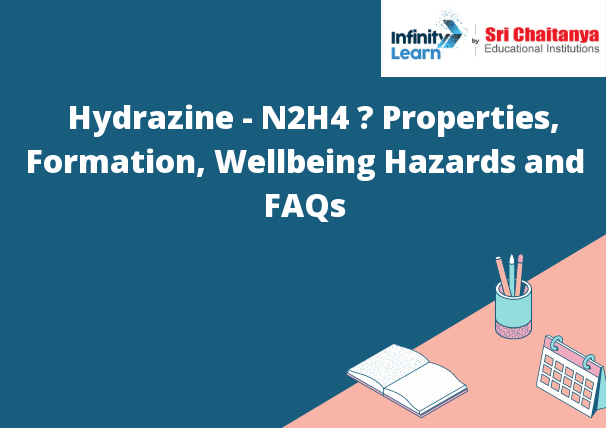Table of Contents
What is Hydrazine?
Hydrazine is a colorless, water-soluble, toxic chemical compound with the formula N2H4. Therefore it is a nitrogen-containing base, the simplest of the azide compounds.

Properties of Hydrazine
- Hydrazine is a colorless, oily liquid with a suffocating odor. It is soluble in water, ethanol, and ether. It is a weak base with a pK a of 9.2. Hydrazine is a powerful reducing agent and is toxic.
- It a powerful reducing agent and also is used as rocket fuel in liquid rocket engines. Hydrazine is also used in the manufacture of pesticides, pharmaceuticals and also photographic chemicals.
- Hydrazine can manufactured by the reduction of sodium hypochlorite with sodium hydroxide, or by the reduction of sodium nitrite with sodium hydroxide or sodium bicarbonate. It also used as a raw material in the production of many other chemicals, such as hydrazine nitrate, hydrazine sulphate, hydrazine phosphate, hydrazine acetate, hydrazine hydrate, hydrazine oxide and hydrazine chloride.
- It used as a rocket fuel in liquid rocket engines. Hydrazine also used in the manufacture of pesticides, pharmaceuticals and photographic chemicals.
Hydrazine – Formation
It is substance which used in many different applications and made in a variety of ways. In this report, we will discussing the formation of hydrazine and the different conditions at which it is made. Hydrazine is a colourless, flammable and toxic liquid. However it used as a rocket fuel and used to power the Apollo 11 mission which was the first manned mission to land on the moon. Hydrazine used as a reducing agent in many different applications. Hydrazine used in the manufacture of plastics, rubbers and textiles. It also used as a corrosion inhibitor in boiler feed water and in cooling towers.
Synthesis of Hydrazine
The synthesis of hydrazine is a two-step process. Therefore the first step is the production of ammonia from nitrogen and hydrogen. The second step is the conversion of ammonia to hydrazine.
- In the first step, nitrogen and hydrogen combined in the presence of a catalyst to produce ammonia.
- In the second step, ammonia converted to hydrazine in the presence of a catalyst.
Hydrazine Uses
- Hydrazine used as a rocket propellant and in the manufacture of some types of explosives.
- It also used as a corrosion inhibitor, a metal surface treatment agent, and a flame retardant.
- Hydrazine is toxic and can cause severe skin and eye irritation. It is also a known carcinogen.







